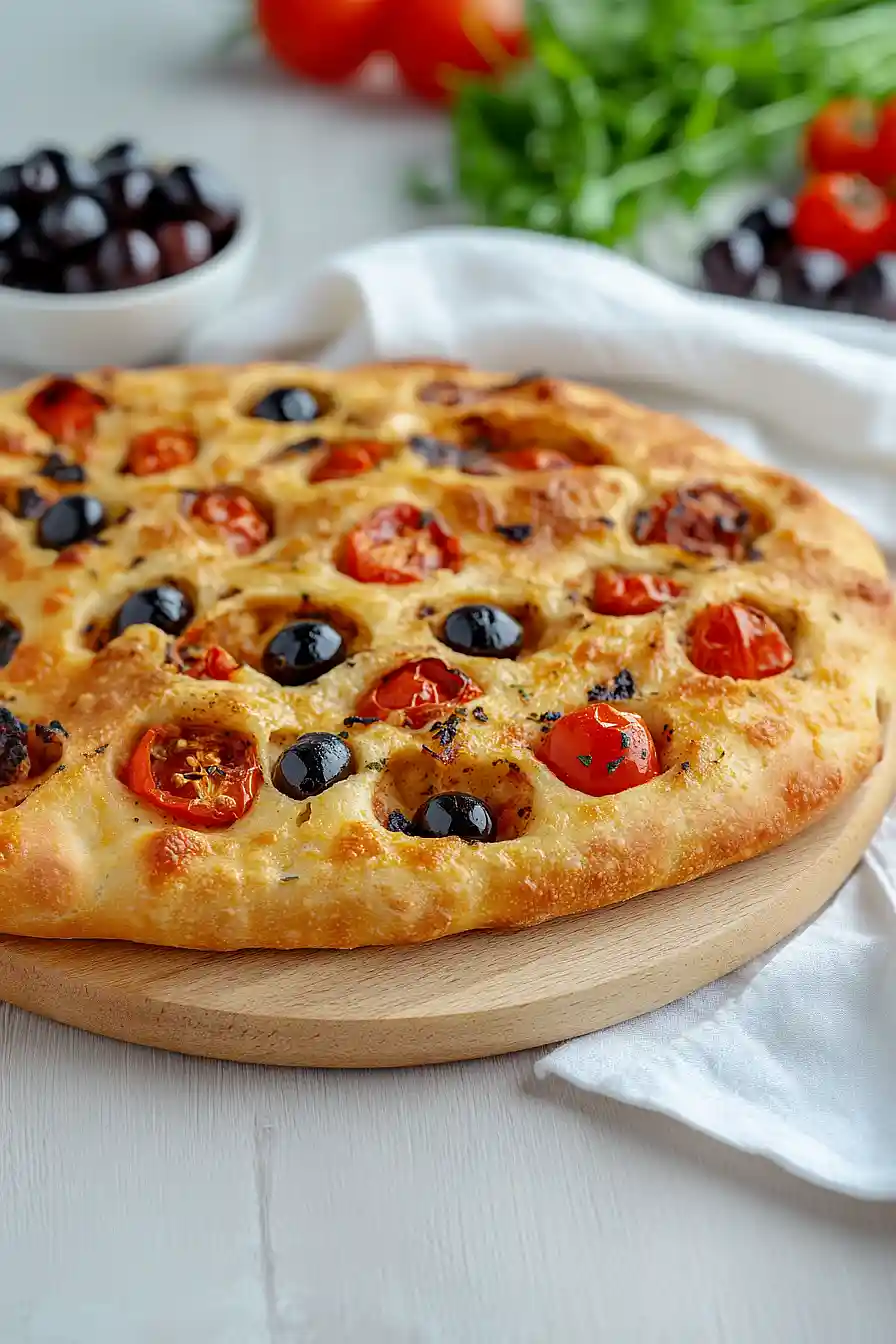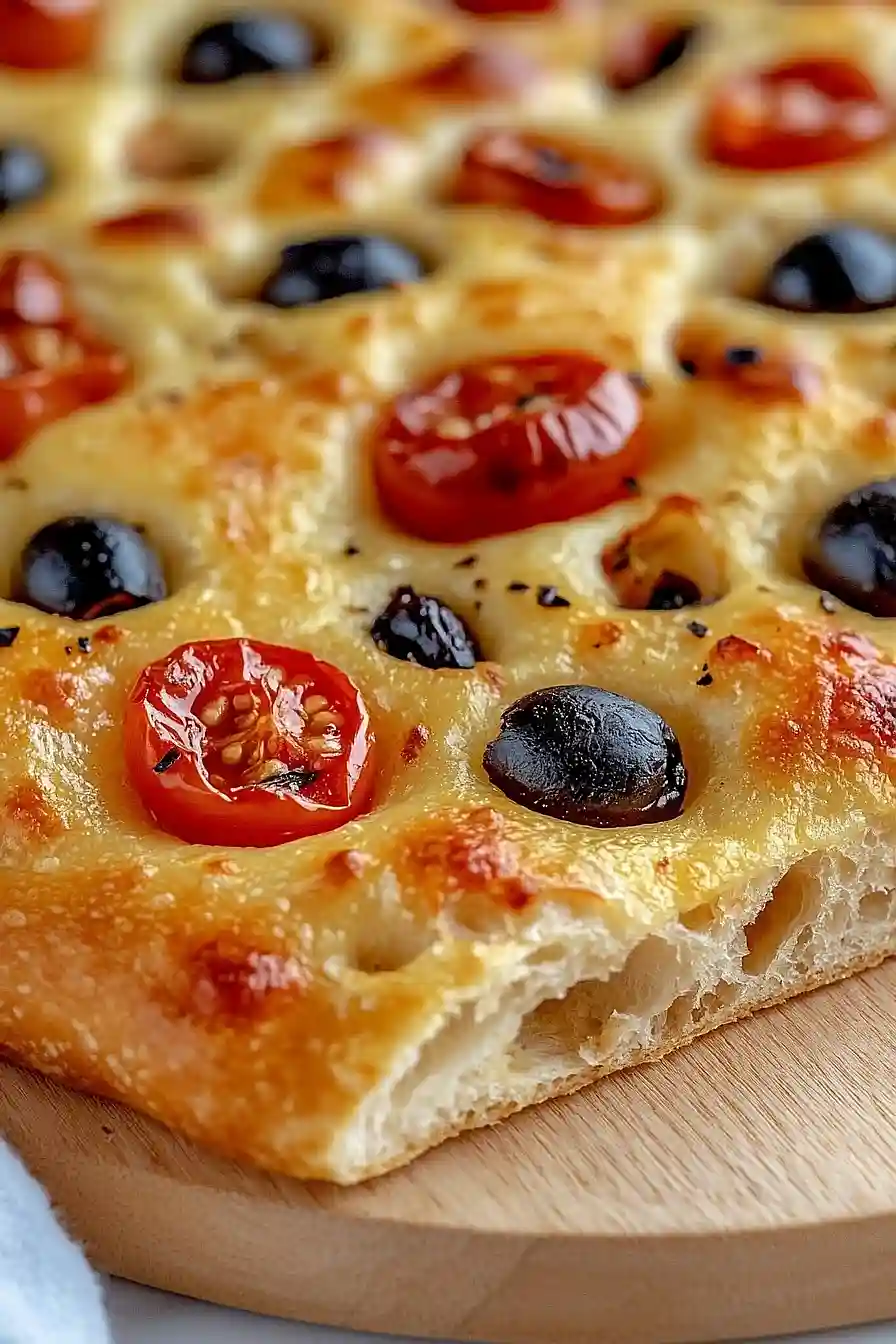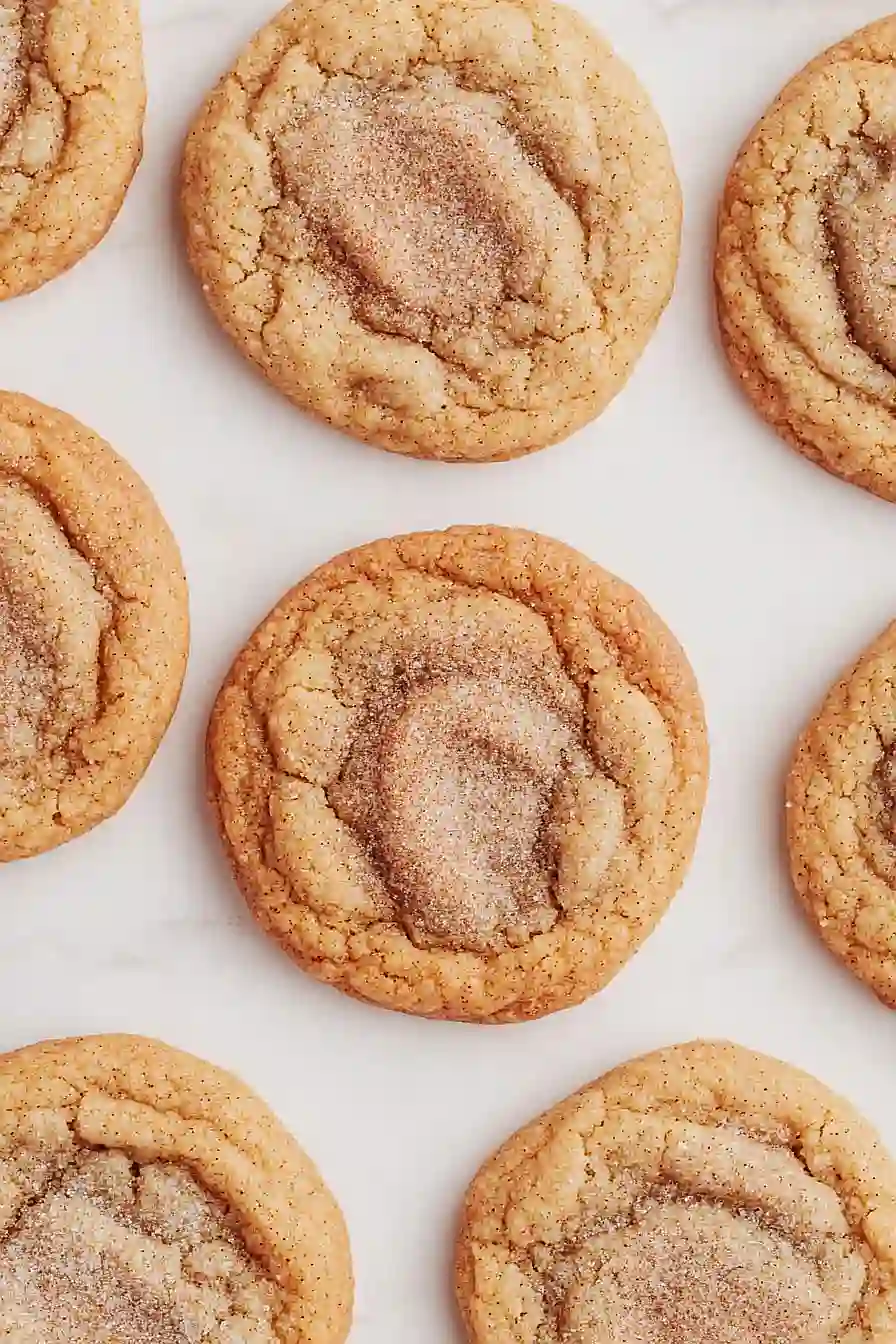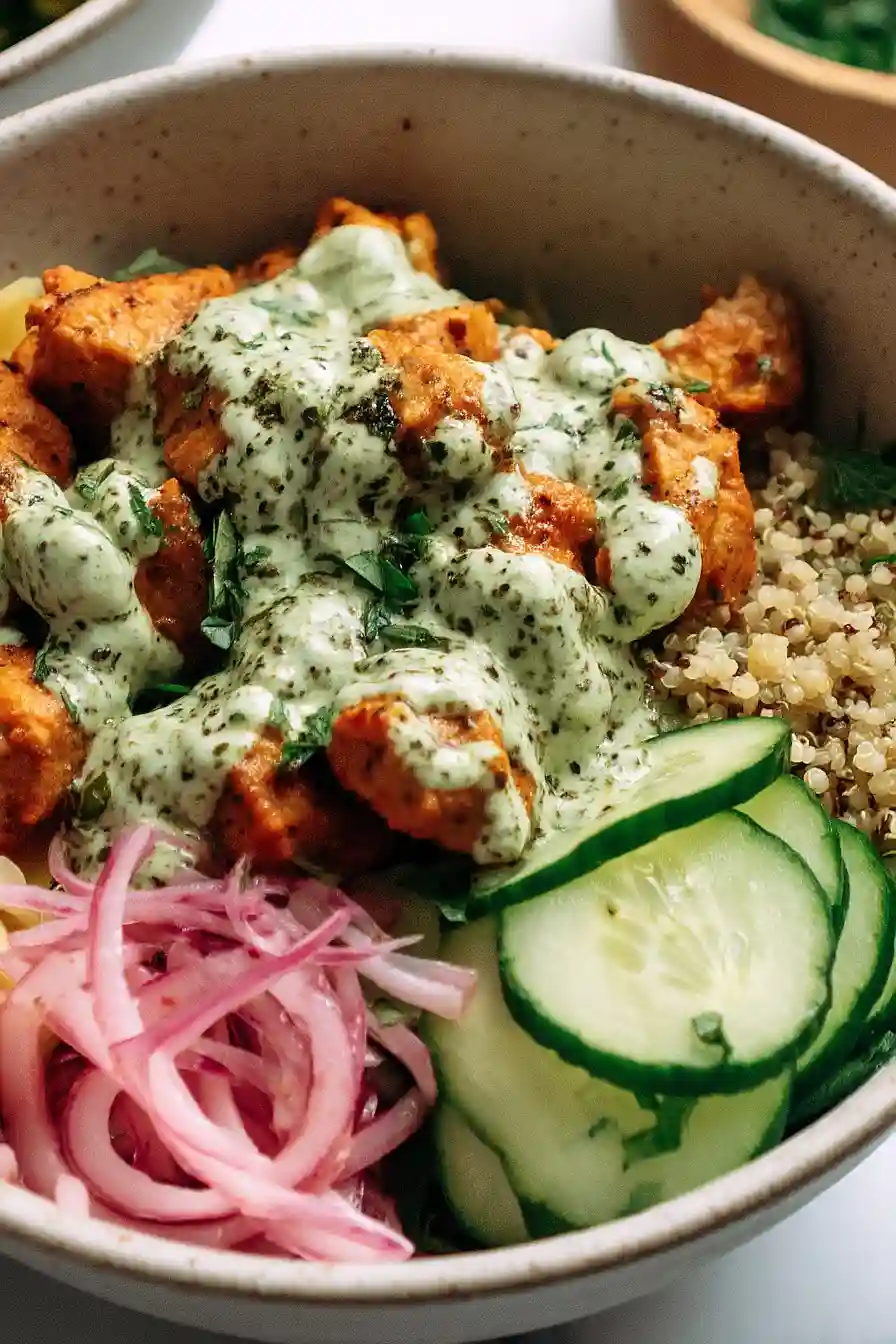Finding a bread recipe that’s both impressive enough for company and simple enough for a weeknight dinner can feel impossible. Most homemade breads require hours of kneading, multiple rises, and careful timing that just doesn’t work with busy schedules, and let’s be honest – the results don’t always justify the effort.
Luckily, this focaccia barese hits the sweet spot: it’s got that authentic Italian flavor that’ll make your kitchen smell amazing, comes together with minimal hands-on work, and is forgiving enough that even bread-baking beginners can nail it on their first try.

Why You’ll Love This Focaccia Barese
- Authentic Italian recipe – This traditional focaccia from Bari brings the flavors of southern Italy right to your kitchen with its classic combination of tomatoes, olives, and oregano.
- Unique potato addition – The boiled potato in the dough creates an incredibly soft, fluffy texture that sets this focaccia apart from regular bread recipes.
- Simple, fresh ingredients – You probably have most of these pantry staples at home, and the fresh cherry tomatoes and olives make it feel special without being complicated.
- Perfect for sharing – This makes a great appetizer, side dish, or light meal that’s ideal for entertaining or family dinners.
- Beginner-friendly bread making – Even if you’re new to making bread, this forgiving recipe gives you confidence to create something that looks and tastes impressive.
What Kind of Flour Should I Use?
This focaccia barese recipe calls for a blend of three different flours, and each one plays a specific role in creating the perfect texture. All-purpose flour provides the base structure, while semolina flour (make sure to get the finely ground “remilled” type) gives the bread its characteristic golden color and slightly nutty flavor that’s traditional in Pugliese baking. The bread flour adds extra protein for a chewier texture and better rise. If you can’t find semolina flour, you can substitute it with more all-purpose flour, though you’ll miss out on some of that authentic flavor and color. Most grocery stores carry semolina flour in the baking aisle, often near the pasta-making ingredients.

Options for Substitutions
This traditional focaccia has some room for swaps, though a few ingredients are pretty important to keep:
- Semolina flour: This is what gives focaccia barese its signature texture, so try not to substitute it if possible. If you absolutely can’t find it, you can use all bread flour instead, but the texture will be different.
- Boiled potato: The potato keeps the focaccia moist and tender. If you don’t have one on hand, you can skip it, but add an extra 2-3 tablespoons of water to compensate for the moisture loss.
- Cherry tomatoes: While cherry tomatoes are traditional, you can use grape tomatoes or even regular tomatoes cut into small pieces. Just make sure to remove excess seeds and juice to prevent a soggy focaccia.
- Black olives: Kalamata or any good-quality black olives work great. You can also use green olives or even capers for a different flavor profile.
- Instant dry yeast: If you only have active dry yeast, use the same amount but dissolve it in the warm water first and let it foam for 5 minutes before adding to the flour.
- Salt flakes: Regular coarse sea salt or kosher salt works fine if you don’t have flaky salt on hand.
Watch Out for These Mistakes While Baking
The biggest mistake when making focaccia barese is using a hot potato instead of letting it cool completely before mashing it into the dough, which can kill the yeast and prevent proper rising.
Another common error is not letting the dough rise long enough – this bread needs patience, so give it at least 2-3 hours for the first rise and another hour after shaping to develop that signature airy texture.
When adding your cherry tomatoes and olives, press them gently into the surface rather than burying them deep, as they can create soggy spots if they release too much moisture during baking.
Don’t skip the final drizzle of olive oil and pinch of salt flakes right before baking – this creates that golden, crispy top that makes focaccia barese so special, and always bake until the edges are golden brown for the best flavor.

What to Serve With Focaccia Barese?
This traditional Italian flatbread is perfect as an appetizer or side dish, especially when you’re serving Italian food. I love pairing it with a simple antipasto spread – think sliced salami, fresh mozzarella, and maybe some roasted peppers or marinated artichokes. It also makes a great accompaniment to soups, particularly minestrone or a hearty vegetable soup where you can tear off pieces to dip. For a lighter meal, serve it alongside a fresh arugula salad dressed with lemon and olive oil, or even just enjoy it on its own with a glass of wine as a snack.
Storage Instructions
Keep Fresh: Focaccia barese tastes best when eaten fresh, but you can store leftovers covered with a kitchen towel at room temperature for up to 2 days. If you need to keep it longer, wrap it in plastic wrap and refrigerate for up to 4 days – just know it won’t be quite as soft and fluffy.
Freeze: You can freeze this focaccia for up to 3 months by wrapping it tightly in plastic wrap and then aluminum foil. I like to slice it first so I can grab individual pieces when I want them. It’s great to have on hand for quick snacks or to serve with soup.
Warm Up: To bring back that fresh-baked taste, warm your focaccia in a 350°F oven for about 5-8 minutes if it’s from the fridge, or 10-12 minutes if frozen. You can also toast individual slices in a toaster or skillet with a little olive oil for a crispy bottom.
| Preparation Time | 20-30 minutes |
| Cooking Time | 35-55 minutes |
| Total Time | 90-120 minutes |
| Level of Difficulty | Medium |
Estimated Nutrition
Estimated nutrition for the whole recipe (without optional ingredients):
- Calories: 900-1050
- Protein: 18-22 g
- Fat: 32-38 g
- Carbohydrates: 135-155 g
Ingredients
For the dough:
- 2/3 cup all-purpose flour (100 grams)
- 2/3 cup fine semolina (100 grams)
- 1/3 cup high-gluten flour (50 grams)
- 3/4 tsp instant yeast (2 grams)
- 2/3 cup water (150 grams)
- 1 small potato, cooked and peeled (75-100 grams)
- 2 tbsp extra-virgin olive oil
- 1 tsp fine salt (5 grams)
For the topping:
- 2 pinches flaky sea salt
- 1 tbsp dried oregano
- 10 to 12 cherry tomatoes (200 grams)
- 10 to 12 black olives (pitted as preferred)
- Extra-virgin olive oil, for drizzling
Step 1: Prepare the Starter
- 2/3 cup all-purpose flour (100 grams)
- 2/3 cup fine semolina (100 grams)
- 1/3 cup high-gluten flour (50 grams)
- 3/4 tsp instant yeast (2 grams)
- 2/3 cup water (150 grams) (use 1/4 cup minus 1 tablespoon, 50 grams, from this amount for this step)
Combine all the flours (all-purpose, semolina, and high-gluten) in a bowl.
From this mixture, take 1/3 cup (50 grams) and place it into a separate bowl to form the starter.
Add 1/4 cup minus 1 tablespoon (50 grams) of water, taken from the total water amount, and the instant yeast to the set-aside flour.
Mix until no dry flour remains.
Let the starter sit, uncovered, for 1 hour, until bubbly and doubled in size.
Step 2: Make and Knead the Dough
- flour mixture (remaining after removing 1/3 cup for the starter in Step 1)
- water (remaining after removing 1/4 cup minus 1 tablespoon for the starter in Step 1)
- starter (from Step 1)
- 1 small potato, cooked and peeled (75-100 grams)
- 2 tbsp extra-virgin olive oil
- 1 tsp fine salt (5 grams)
In a large bowl, combine the remaining flour mixture, remaining water, bubbly starter from Step 1, the cooked and peeled potato (using a ricer or grater), extra-virgin olive oil, and fine salt.
Mix with a spatula to combine, then knead by hand for 5-6 minutes, or use a stand mixer for up to 4 minutes, alternating between low and medium speed.
If the dough feels too sticky, add a bit more flour as needed.
The dough should feel very soft and come together in a ball with a light dusting of flour.
I find that using a potato ricer gives the focaccia a lovely texture.
Step 3: First Rise of the Dough
- dough (from Step 2)
Transfer the kneaded dough to a clean bowl.
Using a knife, score a cross on the surface of the dough.
Allow it to rise in a warm place, such as a turned-off oven, for 1 hour to 90 minutes or until it has doubled in size.
Step 4: Shape and Second Rise of the Dough
- extra-virgin olive oil (for oiling pan)
- dough (from Step 3)
Generously oil the focaccia pan with your hands.
With your oiled hands, remove the risen dough from the bowl and transfer it onto the pan.
Gently spread the dough to evenly cover the entire surface, using your fingertips.
Cover with foil or plastic wrap and a kitchen towel, and allow it to rest for 10 to 30 minutes based on room temperature.
The dough should rise a little, creating room to hold the toppings.
Step 5: Add Toppings and Final Rise
- 10 to 12 cherry tomatoes (200 grams)
- 10 to 12 black olives (pitted as preferred)
- 1 tbsp dried oregano
- extra-virgin olive oil, for drizzling
Slice the cherry tomatoes in half, then gently squeeze each half over the dough to let the juices flow onto the surface.
Press the tomato halves into the dough.
Fill any remaining areas with black olives.
Sprinkle generously with dried oregano and drizzle with extra-virgin olive oil.
Cover and let the focaccia rise for a final 15–30 minutes, depending on room temperature.
I like to gently press the olives and tomatoes so they partially sink into the dough.
Step 6: Bake the Focaccia
- 2 pinches flaky sea salt
Preheat your oven to 465°F (240°C) with a convection/fan setting.
Just before baking, sprinkle a few pinches of flaky sea salt on top of the dough.
Bake the focaccia for 15–20 minutes, or until a golden crust forms and the tomatoes are nicely charred.
If your oven does not have a fan, bake at 482°F (250°C) for 20–25 minutes.
Allow the focaccia to cool slightly before slicing.
For a more pronounced flavor, I sometimes add an extra drizzle of olive oil right after baking.

Rustic Focaccia Barese
Ingredients
For the dough:
- 2/3 cup all-purpose flour (100 grams)
- 2/3 cup fine semolina (100 grams)
- 1/3 cup high-gluten flour (50 grams)
- 3/4 tsp instant yeast (2 grams)
- 2/3 cup water (150 grams)
- 1 small potato, cooked and peeled (75-100 grams)
- 2 tbsp extra-virgin olive oil
- 1 tsp fine salt (5 grams)
For the topping:
- 2 pinches flaky sea salt
- 1 tbsp dried oregano
- 10 to 12 cherry tomatoes (200 grams)
- 10 to 12 black olives (pitted as preferred)
- extra-virgin olive oil, for drizzling
Instructions
- Combine all the flours (all-purpose, semolina, and high-gluten) in a bowl. From this mixture, take 1/3 cup (50 grams) and place it into a separate bowl to form the starter. Add 1/4 cup minus 1 tablespoon (50 grams) of water, taken from the total water amount, and the instant yeast to the set-aside flour. Mix until no dry flour remains. Let the starter sit, uncovered, for 1 hour, until bubbly and doubled in size.
- In a large bowl, combine the remaining flour mixture, remaining water, bubbly starter from Step 1, the cooked and peeled potato (using a ricer or grater), extra-virgin olive oil, and fine salt. Mix with a spatula to combine, then knead by hand for 5-6 minutes, or use a stand mixer for up to 4 minutes, alternating between low and medium speed. If the dough feels too sticky, add a bit more flour as needed. The dough should feel very soft and come together in a ball with a light dusting of flour. I find that using a potato ricer gives the focaccia a lovely texture.
- Transfer the kneaded dough to a clean bowl. Using a knife, score a cross on the surface of the dough. Allow it to rise in a warm place, such as a turned-off oven, for 1 hour to 90 minutes or until it has doubled in size.
- Generously oil the focaccia pan with your hands. With your oiled hands, remove the risen dough from the bowl and transfer it onto the pan. Gently spread the dough to evenly cover the entire surface, using your fingertips. Cover with foil or plastic wrap and a kitchen towel, and allow it to rest for 10 to 30 minutes based on room temperature. The dough should rise a little, creating room to hold the toppings.
- Slice the cherry tomatoes in half, then gently squeeze each half over the dough to let the juices flow onto the surface. Press the tomato halves into the dough. Fill any remaining areas with black olives. Sprinkle generously with dried oregano and drizzle with extra-virgin olive oil. Cover and let the focaccia rise for a final 15–30 minutes, depending on room temperature. I like to gently press the olives and tomatoes so they partially sink into the dough.
- Preheat your oven to 465°F (240°C) with a convection/fan setting. Just before baking, sprinkle a few pinches of flaky sea salt on top of the dough. Bake the focaccia for 15–20 minutes, or until a golden crust forms and the tomatoes are nicely charred. If your oven does not have a fan, bake at 482°F (250°C) for 20–25 minutes. Allow the focaccia to cool slightly before slicing. For a more pronounced flavor, I sometimes add an extra drizzle of olive oil right after baking.















